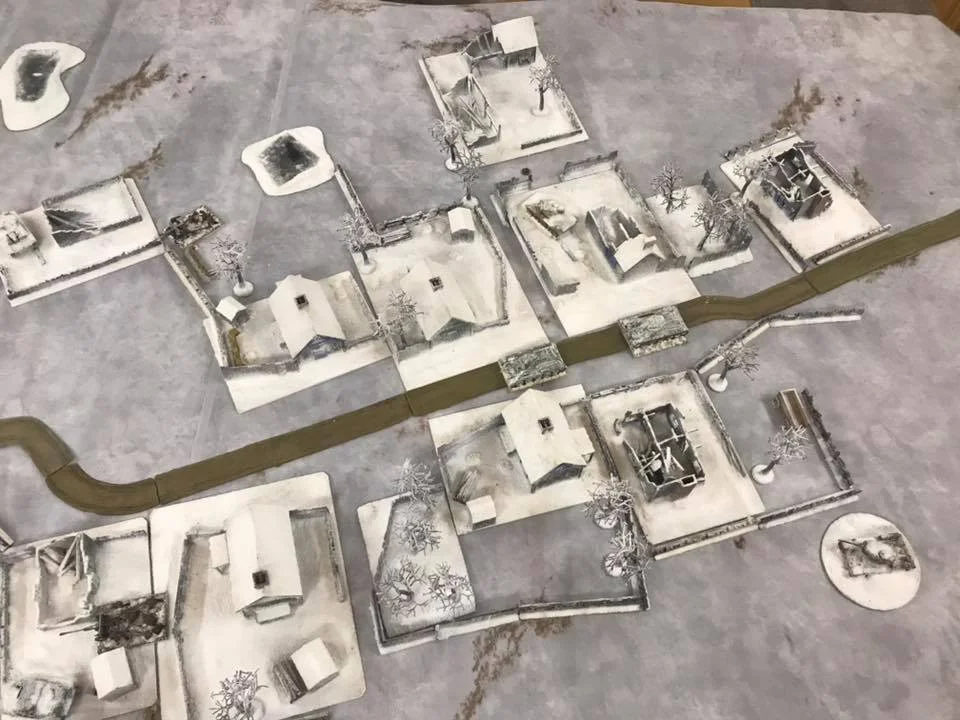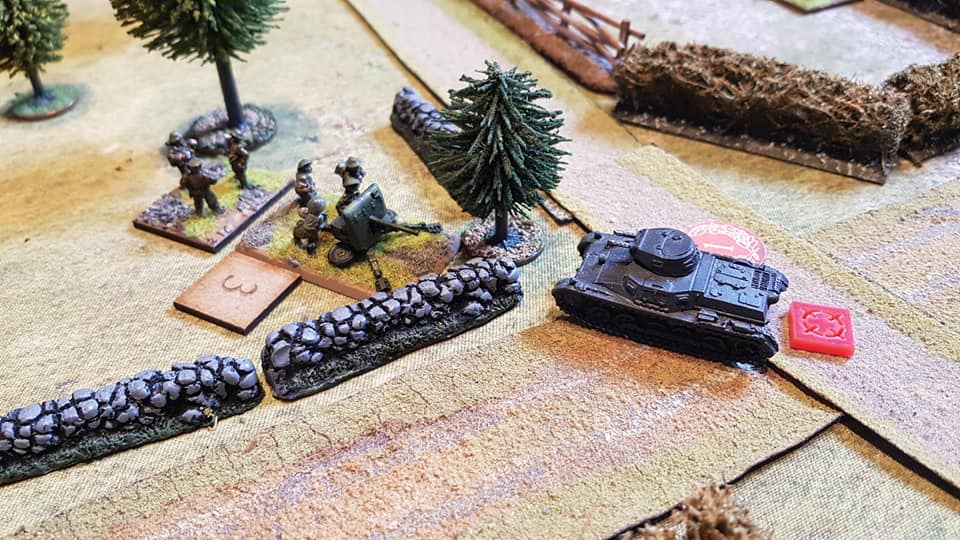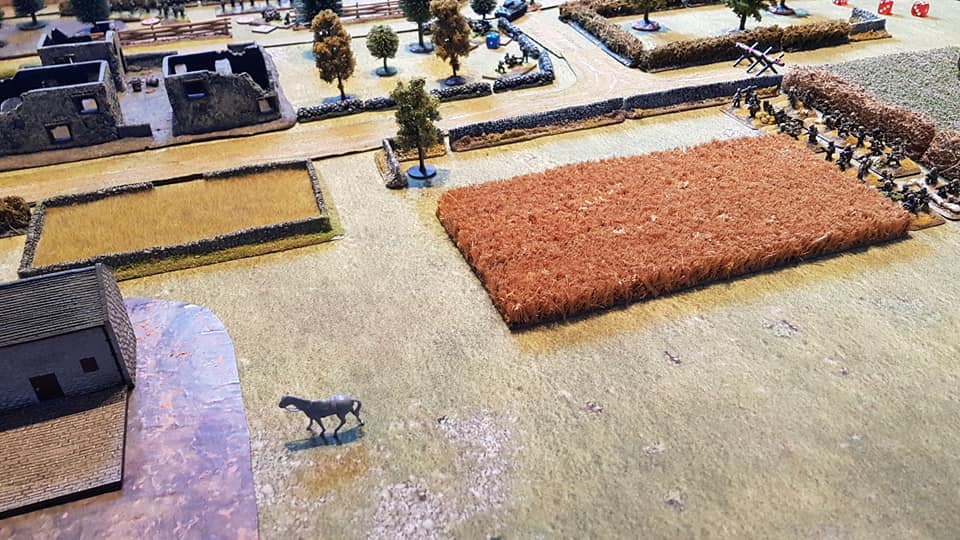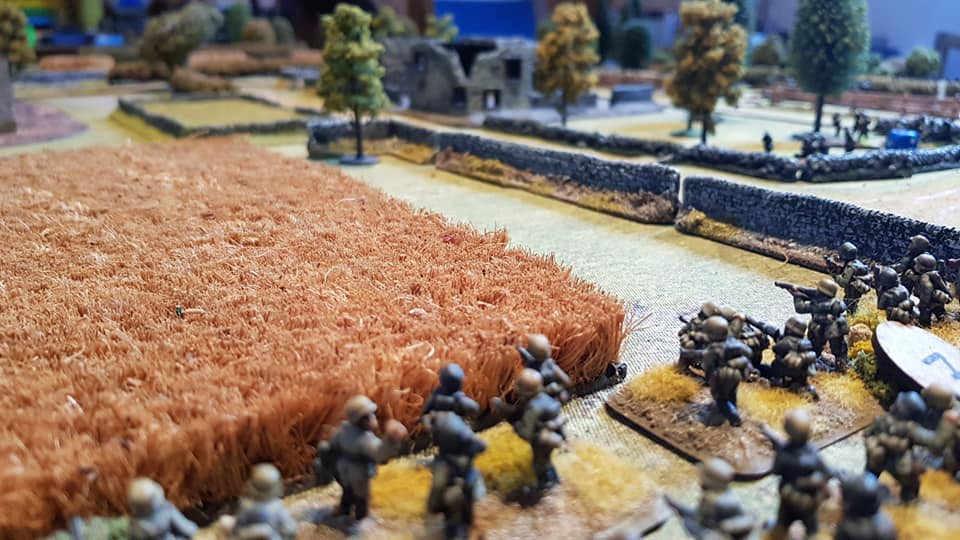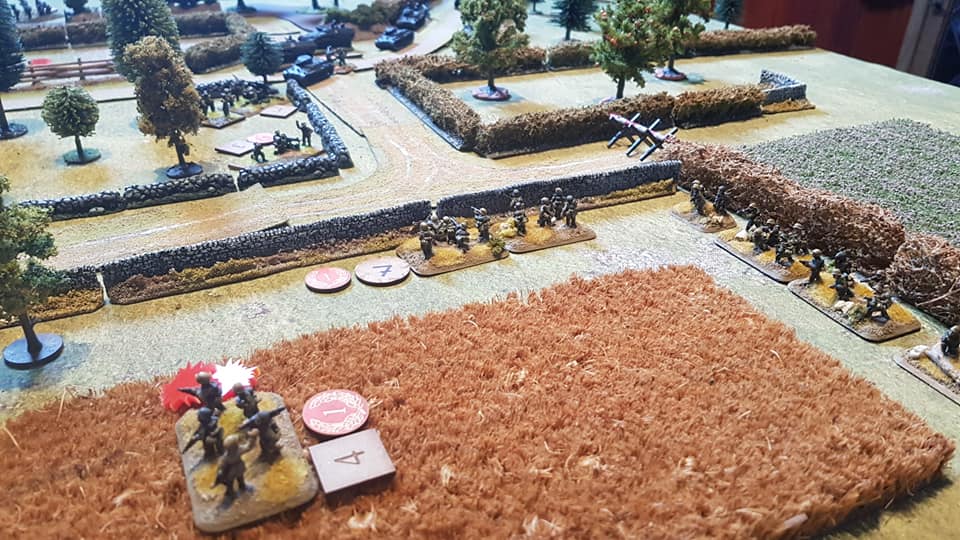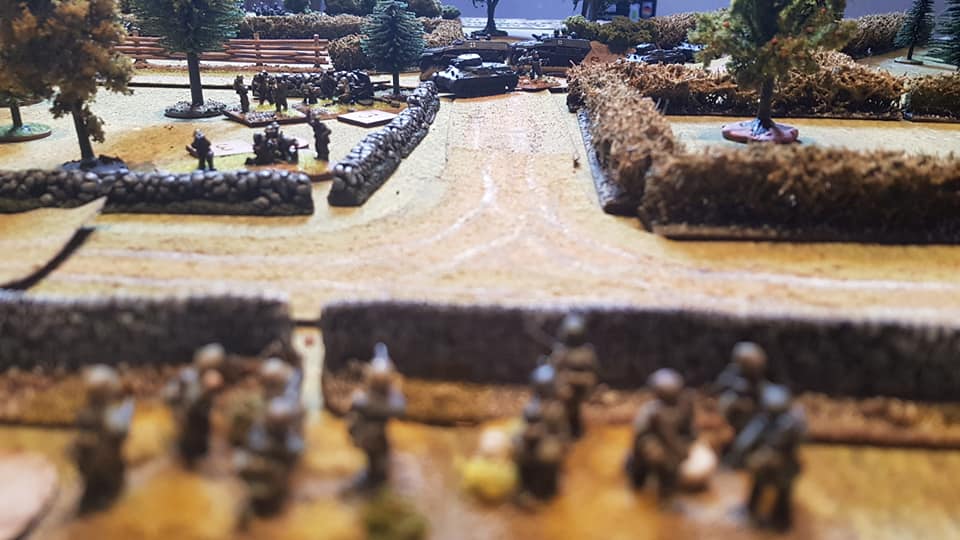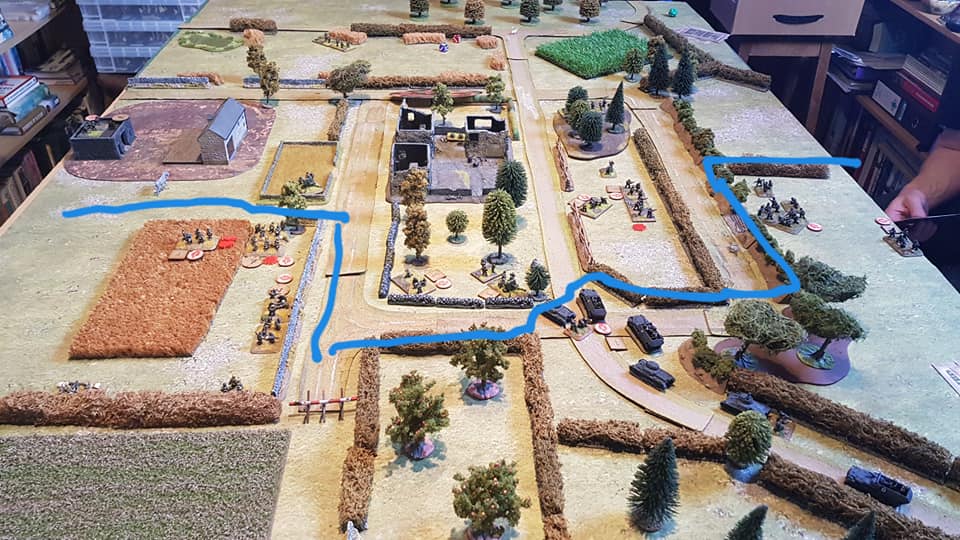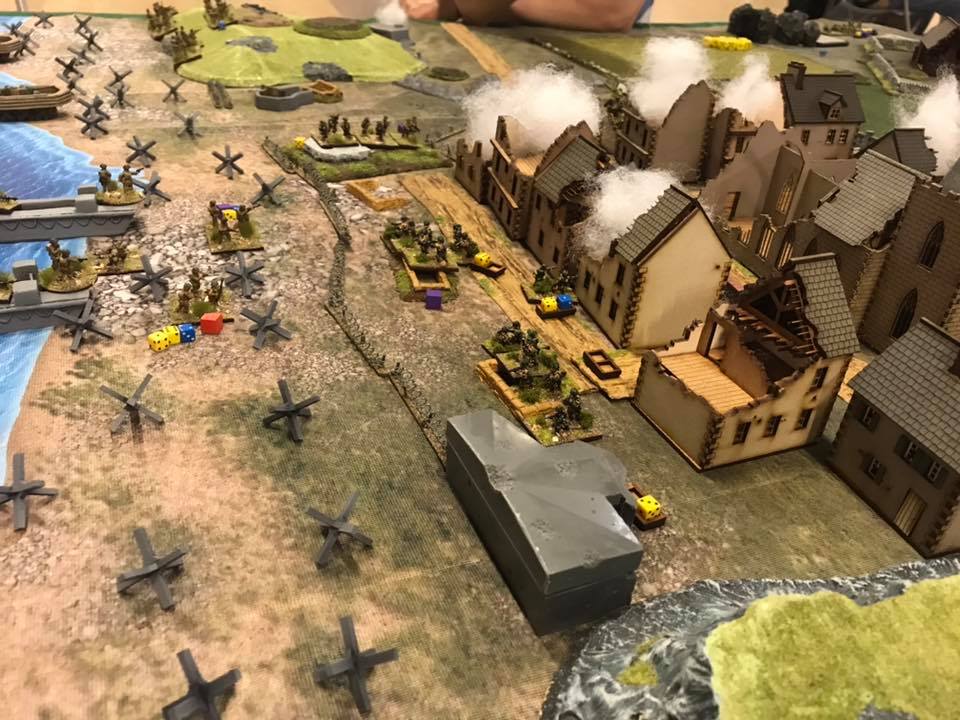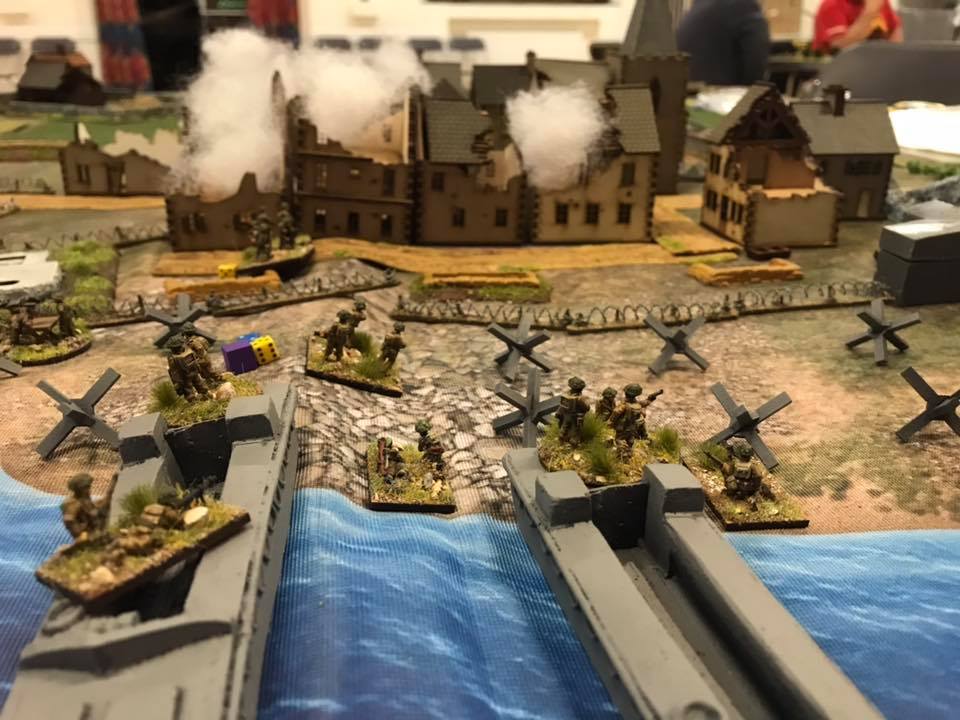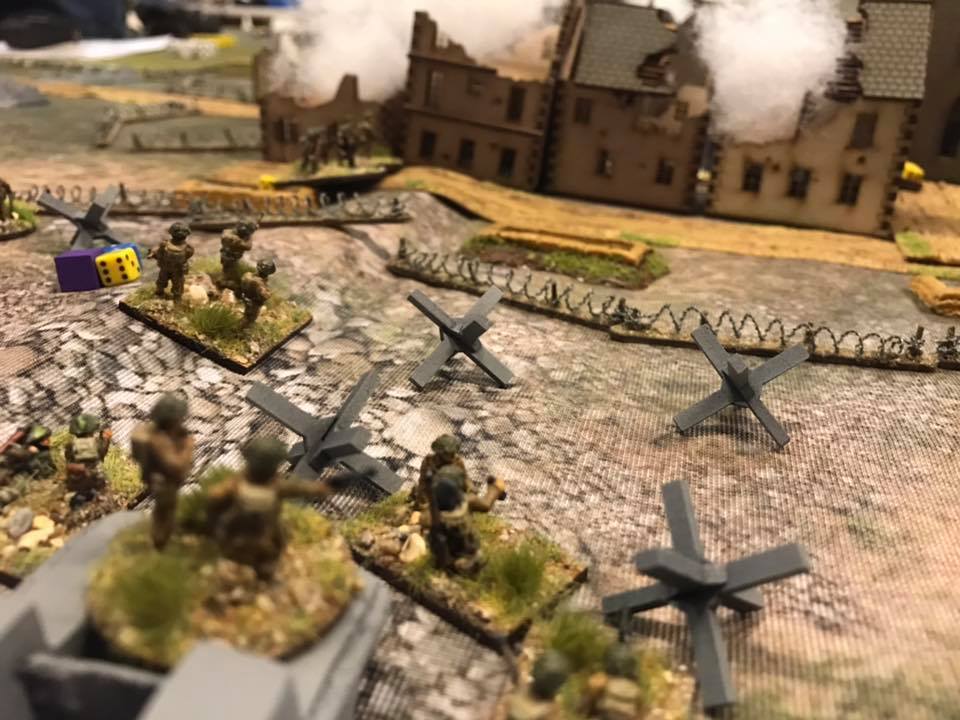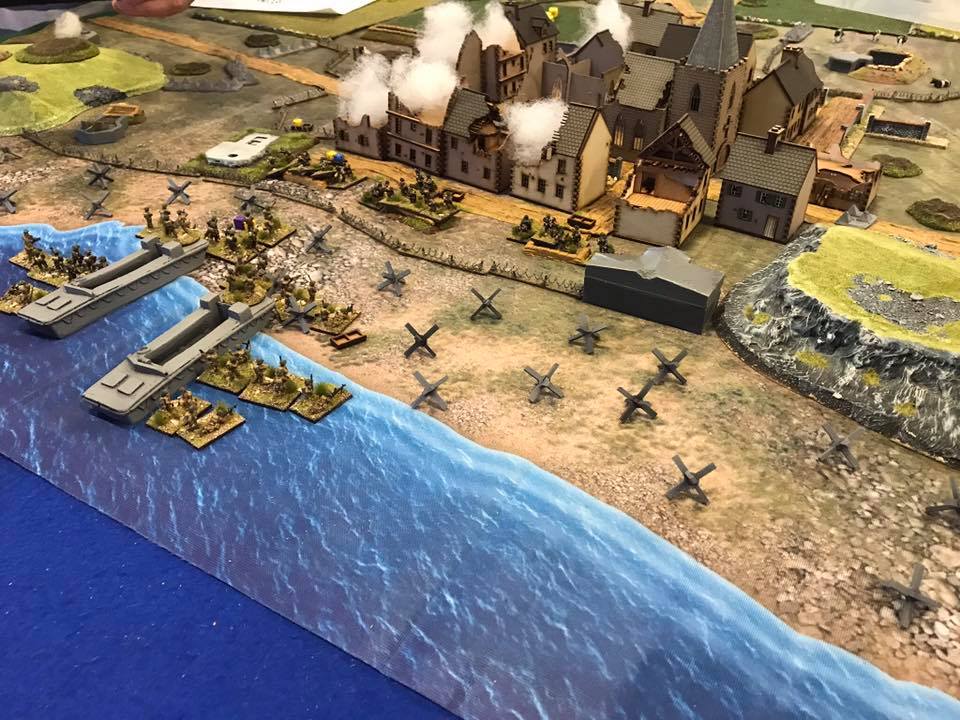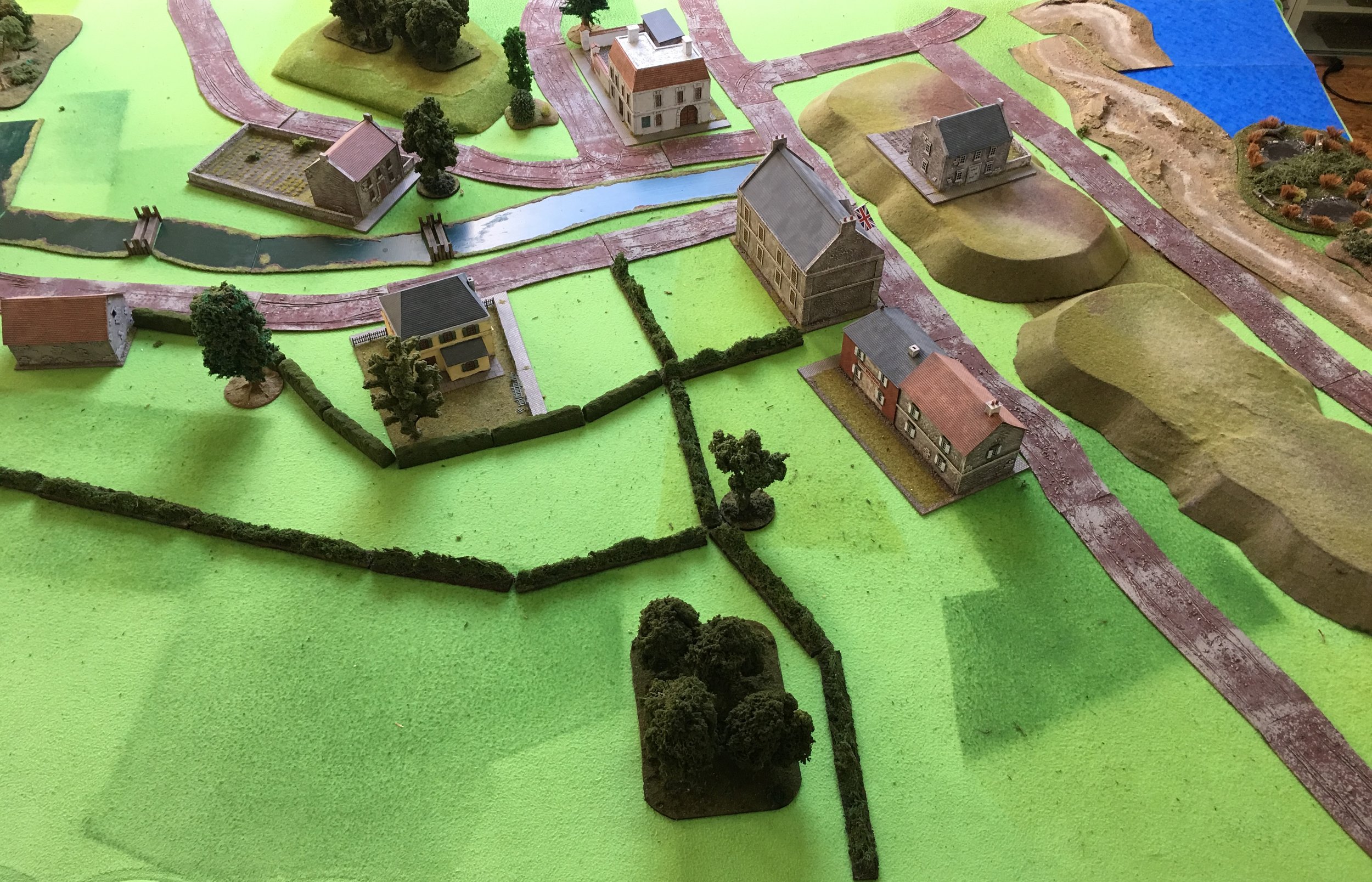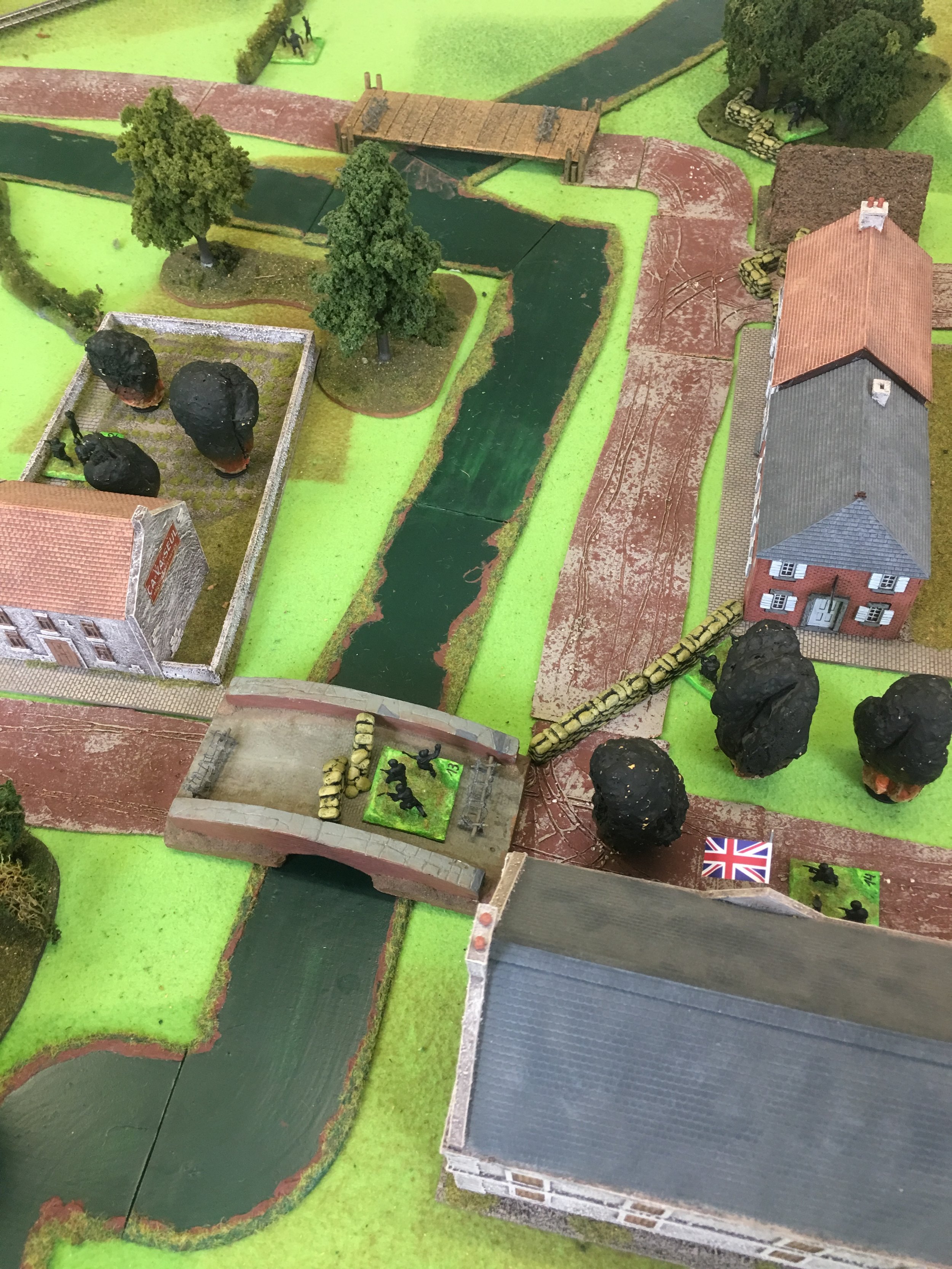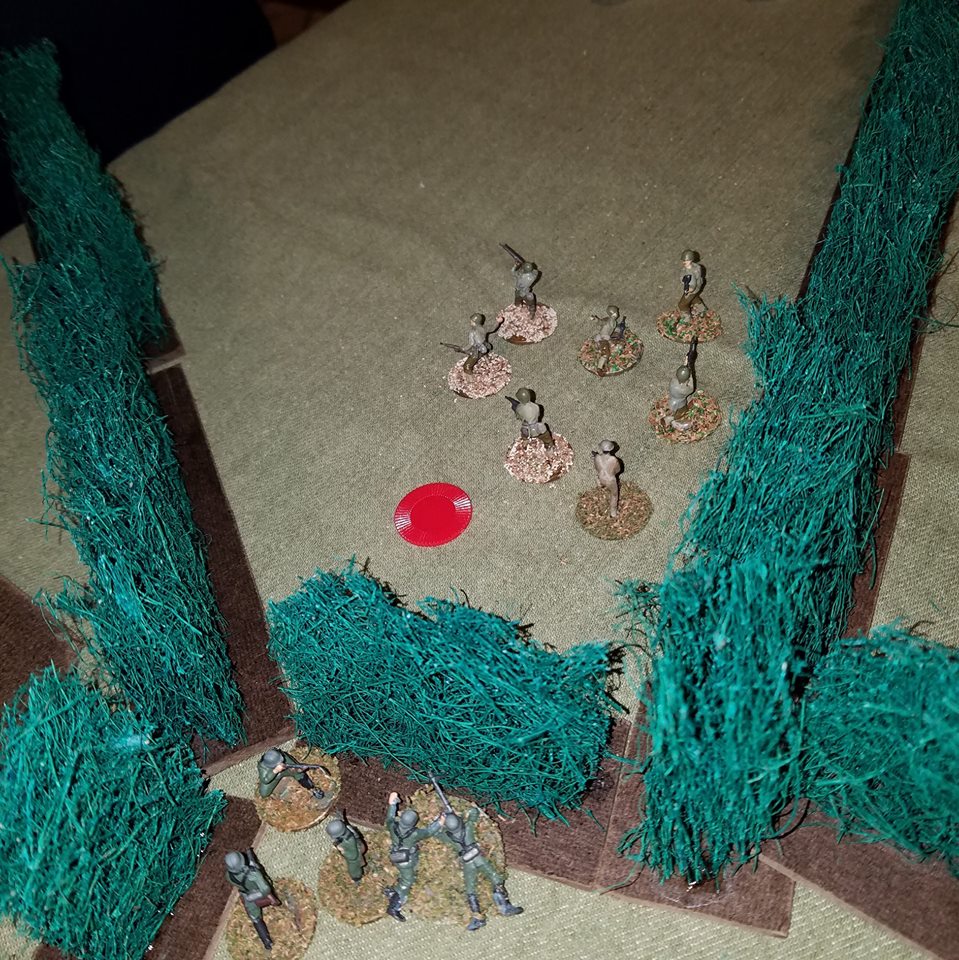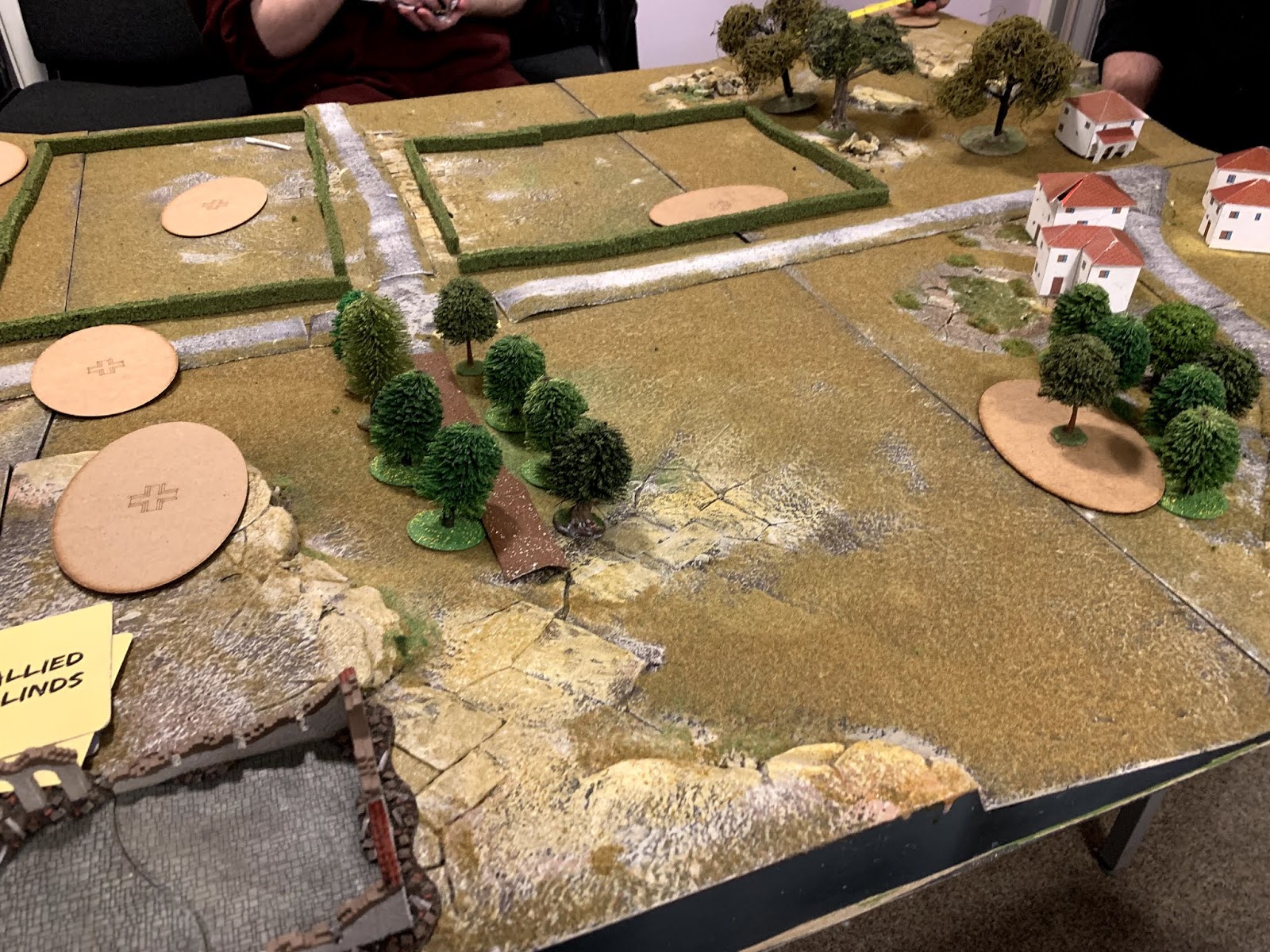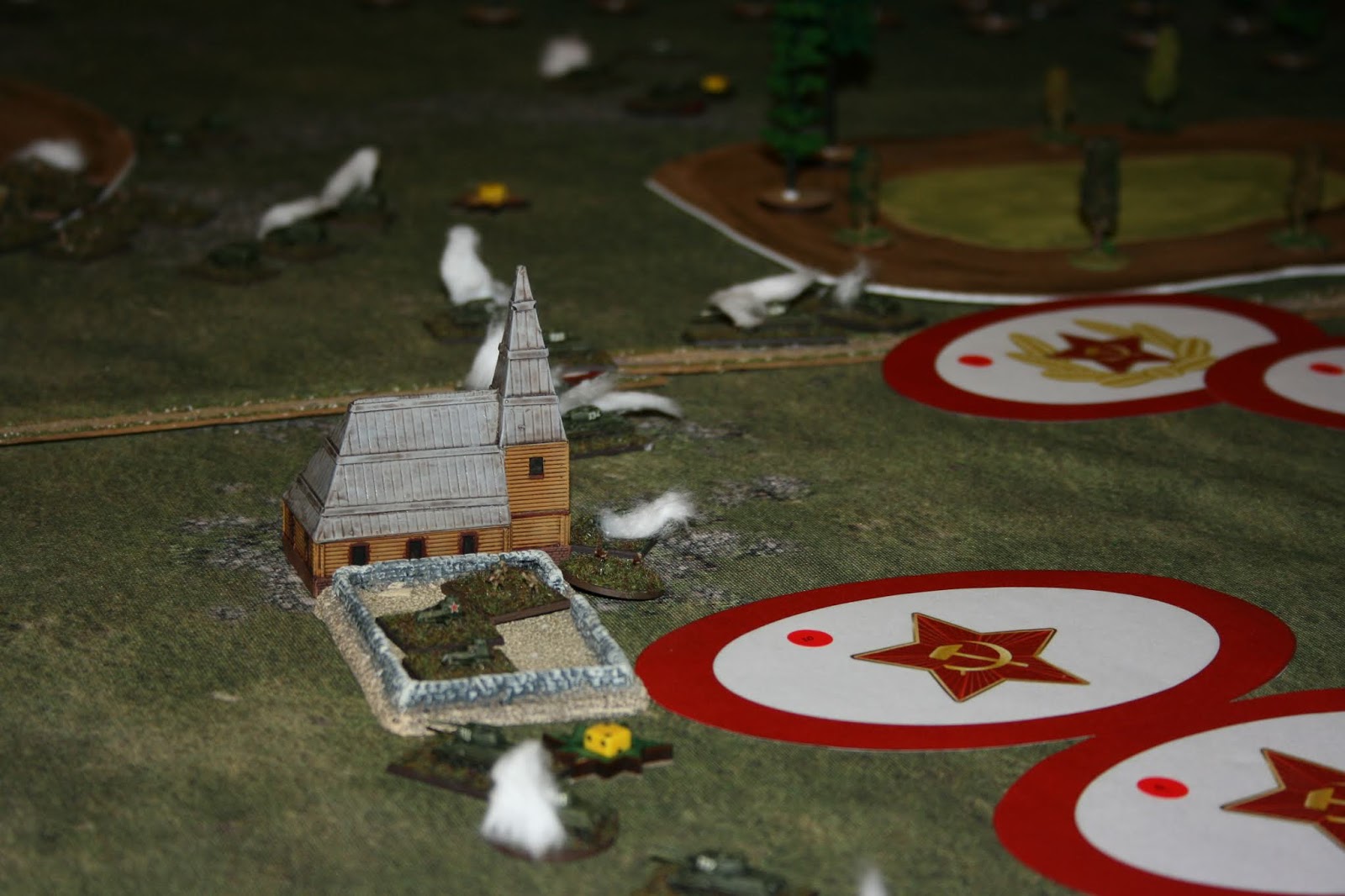I really should have posted a report on this game a lot earlier but was suffering from a bit of a fug at the time and hence now the details are a bit hazy which is a shame as it was good fun. Oh, and it had tons of motorcycles and sidecars.
The Germans (my side) were tasked with clearing a village of French types and had the following to do so: a platoon of Kradschutzen, a Platoon of Sdkfz 221/222’s, a PanzerGrenadier platoon, a platoon of 8-rads and a support platoon of Infantry gun, MG and Mortar sections.
Things were going quite well for ages with our infantry and Hells Angels bumping into defending Poilus and blatting them with fire from supporting armoured cars until they buggered off. It’s the second time that I’ve used these cars and both times the 20mm autocannons and MG’s they are armed with have made mincemeat of the opposition.
We did suffer a bit from some defensive infantry and AT gun fire and artillery stonkage, but we thought we were gaining the upper hand…and then the Somua’s turned up and ruined everything, trundling about nonchalantly with a Gaulois hanging out of their gobs shrugging off our feeble attempts to damage them whilst brassing up everything they could. We prudently decided to withdraw and let the Stukas take over.
Good fun was had though and we got to use Ian’s lovely early war kit.
Iain Fuller

















































